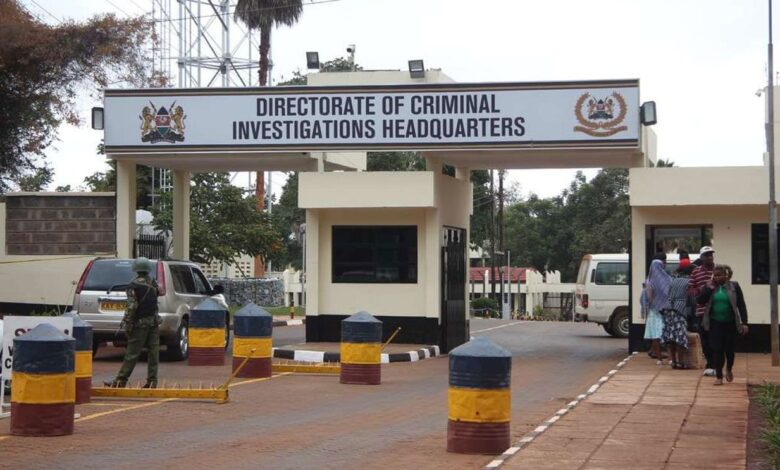Ksh150 Million for Social Media Monitoring: DCI’s Bold New Strategy
DCI to Acquire Ksh150 Million Surveillance Technology for Social Media Monitoring

Parliament has sanctioned a budget allocation for the contentious Optimus 3.0 system, despite ongoing concerns regarding privacy implications. The Directorate of Criminal Investigations (DCI) is poised to invest Ksh150 million in this advanced social media surveillance technology, following the approval from the Budget and Appropriations Committee.
This funding is part of the revised national budget estimates for 2025-2026, which total Ksh2.54 trillion, and is earmarked specifically for the acquisition and operational costs associated with the Optimus 3.0 system. Experts have raised alarms about the system’s extensive capabilities to monitor social media users nationwide.
The Budget and Appropriations Committee, led by Alego Usonga MP Sam Atandi, has designated Ksh50 million for the purchase of the Optimus 3.0 equipment, along with an additional Ksh100 million allocated for ongoing operational expenses under the initiative titled “DCI Forensic Lab Optimus 3.0 Social Media.”
According to experts, this system can track social media users nationwide, identifying users across various platforms and establishing who is posting what content, from which locations, and using which devices, all traceable through connection data.
The controversial allocation comes as part of broader budget reallocations that have seen significant increases in security spending.
The National Police Service is set to receive up to Ksh1.8 billion in additional recurrent expenditure, with the Office of the Inspector General getting Ksh800 million more for police operations.
Surveillance Capabilities
The Optimus 3.0 system represents what critics describe as “a philosophical statement about the relationship between the Kenyan state and its citizens,” with capabilities that extend far beyond traditional law enforcement tools.
The system’s advanced features reportedly include:
- Cross-platform user identification and tracking
- Real-time monitoring of social media activities
- Device fingerprinting and location tracking
- Content analysis and threat assessment capabilities
With Kenya’s social media user base reaching 15.1 million active users in early 2025—representing 26.5% of the population—the potential scope of surveillance is substantial.
Privacy and Rights Concerns
The budget allocation has raised significant concerns among digital rights advocates and privacy experts.
While the right to privacy of communications is guaranteed in the Kenyan Constitution, Kenya lacks comprehensive data protection laws, meaning the government will be operating this powerful surveillance network effectively without proper checks and balances.
Recent reports of illegal arrests, abductions, and enforced disappearances have already fueled suspicions that the Kenyan government has been engaged in illegal surveillance, with telecommunications companies and government agencies accused of violating citizens’ privacy through unregulated monitoring.
Kenya, once regarded as a model of excellence in digital rights in East Africa, has been increasingly plagued by practices that threaten its standing in the region.
Broader Budget Implications
The surveillance system allocation comes at the expense of other critical sectors. The National Fund for the Disabled of Kenya has been defunded by Ksh400 million, with funds redirected to meet operational expenses including replacing the “old fleet of motor vehicles for chief of staff and the head of public service.”
Education has also suffered significant cuts:
- Teachers Service Commission loses Ksh570 million in total allocation
- University education funding reduced by Ksh920 million
- Secondary education faces a net reduction of Ksh4 billion, including a combined Ksh5 billion cut in capitation for secondary and junior secondary schools
Security Sector Gains
The surveillance system is part of a broader boost to security spending.
The Ministry of Defence has received the largest budget allocation in its history at Ksh213 billion, an increase of Ksh13 billion that includes Ksh2 billion for recruitment, Ksh5 billion for Kenya Defence Forces operations in Somalia, and Ksh6 billion for other security operations.
Growing Digital Surveillance Trend
The Optimus 3.0 allocation follows other recent government moves to tighten control over digital spaces, including mandating that all social media companies establish physical offices in Kenya following the government’s commitment to take action against those “misusing social media to defame public leaders and spread harmful content.”
The government has also previously implemented the Device Management System through the Communications Authority of Kenya, a tool that monitors text messages and phone calls to identify fraud cases.
Parliamentary Process
The National Assembly is expected to debate the budget committee’s report this week. If approved, the allocations will form the basis for the budget statement by National Treasury Cabinet Secretary John Mbadi.



